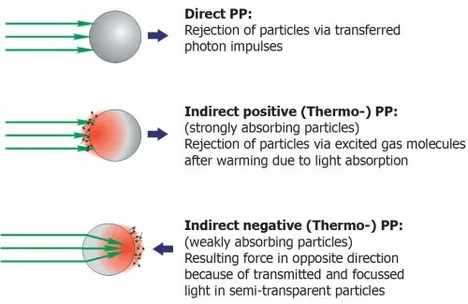Basics of Photophoresis
Photophoresis, first shown by Ehrenhaft (1918), describes the phenomenon when very small particles suspended in gas are moving when they are illuminated by a sufficiently intense beam of light. Motion can occur in the direction of light (positive photophoretic effect) and against that direction (negative photophoretic effect). In conventional separation techniques aerosols and colloids are separated by means of electrical, thermal or flow field forces. The application of laser light is tested as a possibility of separating particles due to their photophoretic properties. Such a separation technique would allow e.g. the isolation of organic from inorganic particles of the same aerodynamic size.
Advantages of Photophoresis
- Contact-free, gentle separation technique
- Separation according to optical properties
